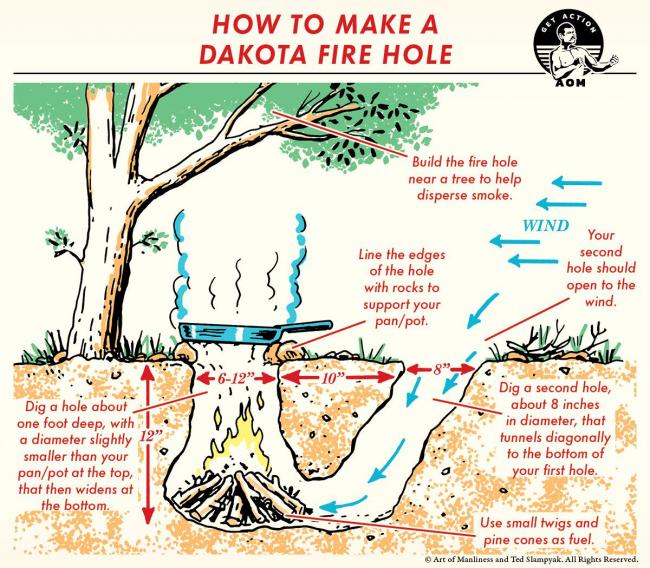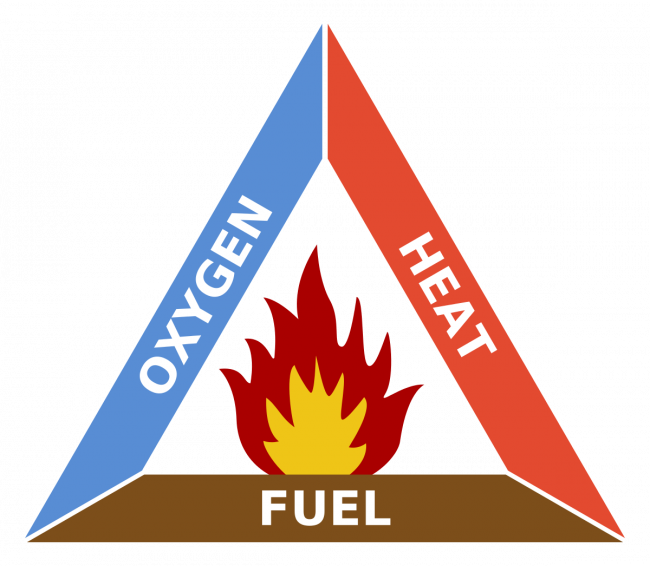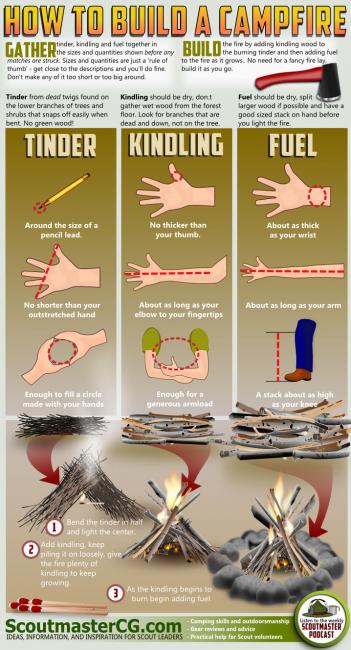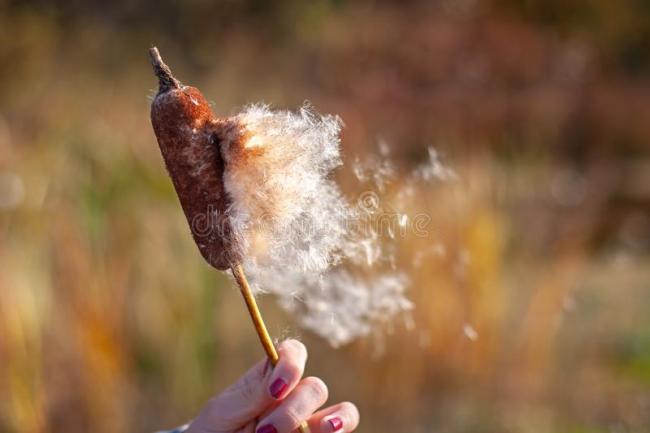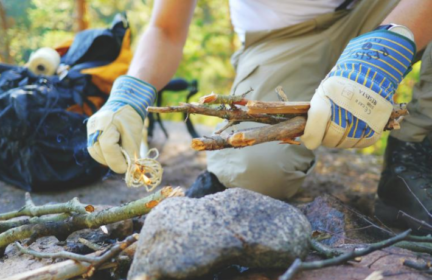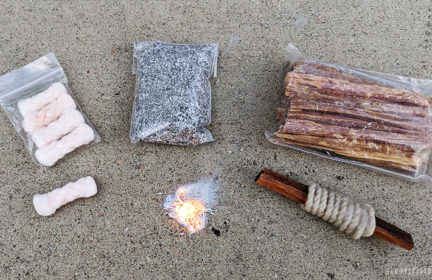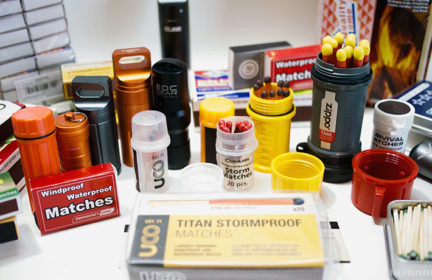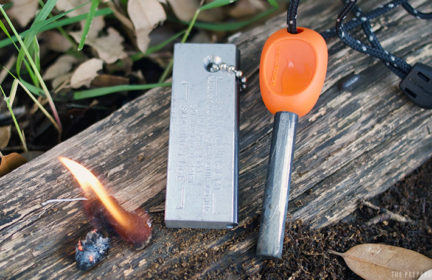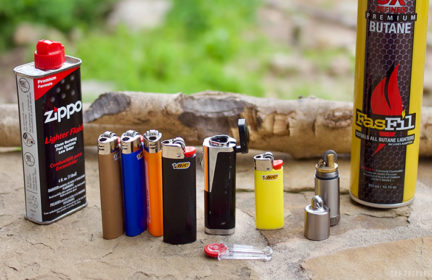What is the best practice for starting a fire?
So, I have the fire starting gear that TP recommends — flint fire starter and some tinderquick. But I’ve never actually started a fire from scratch and kept it going. A friend is going to teach me in the fire pit in her back yard. Now I’m wondering what materials to use for the actual fire? What is a realistic scenario for emergency situations? Are we talking twigs? Logs? Something else?
-
Comments (21)
-
Bill Masen - August 30, 2021
[comment deleted]-
Jonnie PekelnyContributor - August 30, 2021
Hi, Bill. Thanks for the tips. But I think what I’m asking more specifically is what materials should I gather (and where) if I want to simulate starting and keeping going a real fire in an emergency? More specifically, I’m going to show up to my friend’s backyard where she has a fire pit. I’ll come with my flint and my tinderquick. (Maybe I’ll also bring my lint from my dryer which I smeared in vaseline and keep at home.) But then what else do I bring for the fire itself? Part of the issue here is that it’s a little hard for me to imagine an actual emergency scenario where I have to gather the makings for a fire. Where would I be? What would be on hand? Obviously, the most useful training is the one that simulates the real situation best. Otherwise I’d just get a duraflame log from the store! LOL.
-
hikermor - August 30, 2021
In an emergency, you have to use whatever is at hand. Scan your area, looking for material that is dead, dry, and small diameter – think dead, dry pine needles or something similar to use as tinder and then gather twigs, small branches and the like of gradually increasing size to build up to a lasting flame.
Get rid of your flint and get a cheap, reliable Bic, supplemented with good matches in a waterproof container. Just because it is an emergency, doesn’t mean you have to resort to unreliable means of ignition.
You can also carry a small canister of iso-butane and a screw on burner and have a quick, simple means of heat and fire, far more efficient and safer than a traditional camp fire. I did this decades ago and have never regretted it. I still routinely carry the means to start a traditional campfire because you never know….
I have lit many fires in emergency or near emergency situations over the years. Practice before you face an actual emergency. This is a practical skill, best learned through trial and error, and it can be extremely critical.
-
hikermor - August 30, 2021
One other thing – it can be extremely critical to know when and where NOT to build a fire. keep a clear space around your fire, pay attention to thee wind (both direction and intensity) and don’t light up when conditions are bad. Epic wildfires have originated from bad campfires.
When you leave, be sure your fire is completely out. Generally you run your bare hands through the embers and ash to be sure everything is cold…
-
Jay ValenciaContributor - August 31, 2021
Good advice hikermor. Keeping a pile of dirt, water, or fire extinguisher nearby is part of being a responsible fire maker. Also site prep, site prep, site prep. Clear all grass, sticks, and everything around you. And all the other good advice that hikermor mentions.
I’m sure you will be responsible and safe though Jonnie, you know better than many of how miserable wildfires can be living in Cali.
A safer fire method you may want to try down the road is a dakota fire hole. There still is a risk of a wildfire spreading because of this, but I think it is safer than an above ground fire. Many preppers like it because it’s a way to make a stealthy fire that doesn’t produce as much smoke or light like if you were bugging out and didn’t want to announce to the entire mountain where some cooked food can be located.
So you pretty much dig a hole and have your fire in there. But you won’t have the necessary oxygen supply by making a fire in a hole, so you dig a smaller air flow channel to the side.
Here’s a video if the the diagram above is too confusing.
Check your local laws if you need a fire permit or if there is a fire ban in effect before you light a fire.
-
Jonnie PekelnyContributor - September 1, 2021
That’s very cool! A bit above my pay grade at the moment, but something to aim for.
-
-
Bob - August 30, 2021
Good morning Jonnie,
You’ve posed 2 broad questions: “‘best’ practices” and “emergency situations”.
If the emergency is a HAZMAT gas in the area, would you want to make an open air fire ?
If many people also fleeing the area like you are, would you get out the mag fire starter ?
You’ve already received quality guidance here on this new thread.
Recommend you refine your question. Otherwise, the person near you pulling the cart with a methane cannister could cause problems – perhaps worse than the original emergency.
-
Jonnie PekelnyContributor - August 31, 2021
Understood. All the advice about fire gear and when to start or not start a fire is useful, but that’s not what I’m asking in this thread. I thought my question was actually fairly specific: how should I go about learning to build a fire (in non-emergency conditions) in a way that will be the most useful for emergency training? This includes what materials I should use in learning how to build it. Obviously, in non-emergency settings, all kinds of fire-building materials are available, including ones that would make no sense to practice with, like dura logs.
-
-
Illini Warrior - August 30, 2021
start out with your cheapie BIC lighter and damp/wet materials from around your backyard >> that’ll be more realistic to start …
-
Jonnie PekelnyContributor - August 31, 2021
I didn’t realize you could start a fire with damp materials? The reason I was going to use my flint fire starter is because I don’t know how to use it. Fortunately, I already do know how to use matches and bic-style lighters, LOL!
-
Illini Warrior - August 31, 2021
better do more research – there’s dry tinder there to be had ….
-
Jay ValenciaContributor - August 31, 2021
You sure are a prepper Jonnie! Using a harder to use method (ferro rod) instead of an easier method (BIC) just because you want to expand your knowledge and experience. Good for you!
With the ferro rod, know that it comes with a coating on it that needs to be striked off before you reach the real sparking material. So your first fire you make with it will take a bit more time than your second or third fire. Unless you have already been messin around with it and have been practicing into the kitchen sink. Not like I’ve done that or anything… 😉
Before you show up to your friend’s house, I recommend practicing starting some dryer lint, cotton balls, cotton balls and vaseline, or your tinderquicks with your ferro rod on a cookie sheet outside. Get a feel for what works and what doesn’t. Then you will show up to your friend’s house and be a fire beast!
And as a comment to starting a fire with damp materials, I think illini warrior was saying that as a way to test yourself. I would first start out with the driest stuff you can find and master that, then move to slightly damp material as a challenge that would probably be more realistic to what you would experience in the real world.
Remember, that green will not burn very easily. So a fresh alive branch will not burn, but a dead and dried out branch will. So if the stick bends without breaking and feels soft and pliable, then it’s too fresh and green. If it snaps in half, then it’s nice and dry.
If you only are able to find wet or damp material around you, then once you get a fire started, place your damp material next to the fire so that the currently burning fire will dry out the damp material that you will put on later.
Remember the fire triangle. Every fire needs fuel, heat, and oxygen .
The most common mistake that I made when learning how to create a fire was throwing too much fuel onto the fire, thus smothering it and not allowing enough oxygen in. Creating a spacious fire area with lots of empty and dead space in between branches and sticks will allow for it to kick off fast and powerfully.
Some people carry a small pocket bellows in their fire kit and it really does help throw some oxygen onto the fire. Check out this video. By the way, this is not my video.
-
Jonnie PekelnyContributor - September 1, 2021
I really like those bellow! Gonna get some I think.
-
-
Bradical - August 30, 2021
If the above picture doesn’t show up very well, here’s a direct link to where I stole it from.
I think that this graphic does a pretty darn good job at teaching you how big of pieces to gather and how much.
Let me share a couple other fire starting tips from my experience.
- When you think you have gathered enough wood, go and double it.
- Gather more firewood than you think you will need or use, because in a survival or camping situation where you are running a fire all night, you don’t want to run out at 2am and be stumbling through the woods at night looking for more sticks.
- While out on a hike or bugging out, look for good sources of tinder along your way. Store these in a jacket pocket so that your body heat will dry out any moisture left in it. Then when you get to your camp location, you will have some good dry tinder to start a fire.
- You won’t be able to take a fire steel to some tinder sticks, but you can if you gathered some fine lint, tinderquick like you mentioned, dried leaves smashed and broken down, or take those tinder sticks and break them up and expose as much surface area on them as you can.
- Use a lot of water and or dirt to put out the fire when you are done. When camping before we let the fire die out at like 10pm and woke up the next morning and started to throw sticks on the ashes that remained. Before we could gather all the wood we would need for our morning breakfast, the fire was going again. Live coals and heat from the ashes lay dormant throughout the night and were enough to get it going again. Glad that a wind didn’t kick up the ashes and start a fire somewhere during the night.
-
Jonnie PekelnyContributor - August 31, 2021
I love this graphic! And thank you for the tips! So, as someone who’s never built a fire from scratch… do I understand correctly that if I’m starting with a match or lighter, I can go directly to tinder (sticks) but if I’m starting with flint I need to use even smaller materials to get the spark to light?
-
Bill Masen - August 31, 2021
FLINT Needs LINT, IE ultra dry fluff or of your lucky bone dry crumbly leaves or razor thin wood shavings.
-
hikermor - August 31, 2021
Just get out there and practice….It isn’t hard and practice makes perfect. Even with a match, or a blowtorch for that matter, use very small, fluffy materials as starting tinder; pick the finest material available and build a progressive ladder of thicker, more robust items.
It is easy to carry a very small, light weight fire making kit – quality matches (not the current kitchen match stock which is much lower quality than in years past), a dependable lighter (Bic). I often carry a 2 oz bottle of alcohol use as an accelerant. Another handy item is a length of tubing which you can use to encourage glowing coals into flames – quite effective!
It makes sense to also carry some dry tinder, as well – cotton swabs with vaseline works well.
I do carry a ferro rod, works effectively with a knife blade to ignite my iso-butane canister stove when i want to light a fire quickly and don’t wish to screw around with bushcrafty tricks.
The more fires you light, the more proficient you will become. It is definitely a useful skill and it can make a huge difference…..
-
Jay ValenciaContributor - August 31, 2021
You do need even smaller, lighter, and fluffier material to start a fire with a ferro rod.
While the sparks of a ferro rod are hot (800-3000 degrees) they only touch the source for a fraction of a second. A match flame is a lot cooler at around 460 degrees, but comes in contact with the source for a much longer period of time.
The cat tail fluff is a good natural tinder source.
Good suggestions by the way Bradical. Especially the tip on gathering more wood than you think you will need.
-
Illini Warrior - August 31, 2021
went to compressed lint balls rolled vaseline decades ago >>> pack them tite in a 3/4″ PVC piece of pipe with two loose end caps – poke one out as needed ….
haven’t made any lint balls in ages but I still collect drier lint – have Pringle cans full – thinking about making some jumbos out of TP paper rolls ….
-
Jay ValenciaContributor - August 31, 2021
Lots of people fill old medicine bottles or sandwich baggies with their supply. Keeping it waterproof is important.
There is an old forum post by Matt Black where he cooked his vaseline into his cotton balls instead of just manually rubbing it together and it gave for a longer burn time. I thought it was a great post that I hadn’t seen anywhere else.
https://theprepared.com/forum/thread/fire-heh-heh-fires-cool/
And then lower down on the post is my embarrassing attempts of a fire starter that I had previously made. But I’m glad that Matt’s post encouraged me to try out my preps that I had DIY’d and realized that they were pretty much garbage.
-
-
M. E.Contributor - September 9, 2021
All I can say is that I saved up my dryer lint for an entire year (thank you Covid), stuffed it into the cardboard from all that Covid toilet paper, and when I lit my first fire with it using a knife and a ferro rod it was the most fun I had all year! (I did it at a campground, in a clearing, in an official fire pit, and it was SO. MUCH. FUN.)
-
- News for the week of 2025-10-27 - 7 days ago
- News for the week of 2025-10-20 - 2 weeks ago
- News for the week of 2025-10-13 - 3 weeks ago
- News for the week of 2025-10-06 - 4 weeks ago
- News for the week of 2025-09-29 - 1 month ago
This forum is heavily moderated to keep things valuable to as many people as possible. Full community policies are here. The basics:
- 1. Be nice to each other.
- 2. Stay focused on prepping.
- 3. Avoid politics, religion, and other arguments.
- 4. No unfounded conspiracies, fake news, etc.
- 5. Debate ideas, not people.
